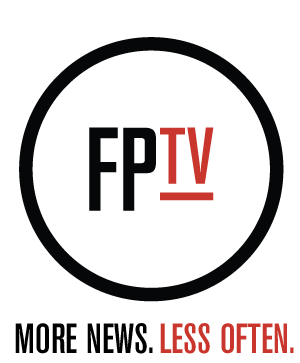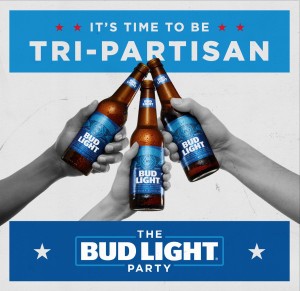Visual Vernacular: Dennis Nance
A wizard of word, wardrobe, and wonder, Dennis Nance is one of Houston’s greatest treasures and will be taking his knowledge to Galveston in the near future. As long time Exhibitions & Programming Director of Lawndale Art Center, Nance helped funnel the fiercely creative through the Lawndale galleries and on the outside of the building through their mural program. Between The Big Show, Dia de Los Muertos programs, mammoth installations, studio programs, and educational outreach, Nance has served his post with joy and enthusiasm while helping present over 200 solo and group exhibitions. All these years at Lawndale, along with his own triumphs in his art, have tailored him to be a thoughtful and forward thinking organizer of the vivid and contemporary, ready to push visual boundaries on the island as the new curator of the Galveston Art Center.
Before Lawndale, Nance worked for the Information and Cultural Affairs Section of the Consulate-General of Japan in Houston, where he planned all aspects of cultural leaders’ visits and managed the Japan Exchange and Teaching Program for Texas and Oklahoma. Beyond the realms of art, he was an Assistant Language Teacher in Gifu City, Japan from 2025 to 2025. Nance has also worked as a preparator at The Museum of Fine Arts, Houston, Blaffer Art Museum, Rice Gallery, the Houston Center for Photography and the Contemporary Arts Museum Houston.
As an artist, Nance makes energetic and contemporary clothing and costumes for both everyday wear and special occasions. In 2025, he was awarded an Individual Artist Grant from the Houston Arts Alliance and an award from The Idea Fund. He has exhibited his work and wearables at the CAMH, The Brandon, BOX 13 ArtSpace, and the Menil Collection bookstore. Nance took a break from constructing his latest creations to answer some questions about his whirlwind life in the arts and beyond.
Free Press Houston: How was art a part of your life growing up?
Dennis Nance: I was really lucky to have teachers that made art an influential part of my life growing up and parents that always encouraged me to pursue my interests. In kindergarten, my teacher entered a drawing I made into the Houston Livestock Show and Rodeo’s student art contest. I think most people who grew up in Houston have similar memories. That drawing and award ribbon are both a souvenir of my first encounter with art. It felt even more important because my parents had it laminated.
I grew up going to public school in Pasadena. My art teacher, Beatrice Wyman, took me to the Museum of Fine Arts, Houston for the first time in her old truck after school, something teachers would probably not be able to do today. I quit the football team and continued taking her classes as my elective for the rest of high school. She encouraged me to attend life drawing classes at Art League Houston, helped me get scholarships to take Saturday classes at the Glassell School of Art, where Bill Davenport taught my first painting class, and develop a portfolio that would get me into art school. I opted to go to a small liberal arts college instead so I could study abroad and continue studying French.
My other early influence came from studying French throughout high school with Susan Pruett. Students called her “Madame” and she’d have us keep a “culture journal” of notes and clippings of French language we encountered in our everyday lives, memorize and sing famous 60s French songs by Françoise Hardy and recite poems by Paul Verlaine. I still remember them today. They were the best assignments even though some of their meanings didn’t come to me until much later. Madame Pruett encouraged me to apply for a summer exchange in France through the Pasadena Rotary Club, which really changed my life and encouraged me to seek out experiences that would broaden my understanding of the world.
FPH: How did the connection between art and administration happen for you?
Nance: I made the connection working for the Art Department at Austin College in Sherman, Texas. I worked for the department throughout college, organizing slides, cleaning studios, mixing dark room chemicals and glazes for the ceramics classes. We made an art car with sculpture professor and artist Mark Monroe using his father’s car. We covered it with tiles made to look like red brick using clay from the Red River. I eventually helped run the college’s galleries.
I really enjoyed working with the artists that were invited to the college for exhibitions. They were real people, not just works hung on a wall. It also pushed my understanding of what art can be. I remember helping cover one of the school’s gallery walls in mud for an installation by the late Tre Arenz and thinking, “this is crazy, I want to work with people like this for the rest of my life.”
I met a lot of artists when I came back to Houston after finishing college. I took any installation job I could find and had a grant studio at Commerce Street Artist Warehouse for a year. Many of the artists and administrators I met and worked with that year are still active in the community today. Eventually, my student loan bills started coming in and I left Houston to teach English through JET in Gifu, Japan. There I was able to find ways to be involved in the arts, including a short artist residency in Nagoya, participating in a local show in my town’s train station, with an art teacher from a school I worked in, and volunteering with a friend to lead gallery tours in English at the local art museum.
FPH: What has your experience been like mentoring artists through various programs at Lawndale? Any memorable moments?
Nance: I think I’ve learned more from the artists I’ve worked with than I’ve taught them to be honest. There is a constant exchange of ideas in a place like Lawndale and a very supportive community. You get really good at troubleshooting all sorts of problems and finding ways to make exhibitions happen with the number of shows Lawndale presents in a year. A solution from one exhibition becomes an option for a future problem. There are also so many people who are ready and willing to help. It’s really easy to become friends with the people you work with and that’s what I enjoy most. Having a good time with the artists and staff has always been an important part of working in a small arts organization.
There are a lot of memorable moments, but I think one of the funniest was when the artist collective Boozefox from Austin installed a huge, interactive cardboard head in Lawndale’s largest gallery. They worked 12 hour days for 10 days straight and the show was one of the most ambitious things I’ve seen a group of artists put together. While they were installing we kept finding empty bottles of Smirnoff Ice in the trash. Later we found out the artists were hiding them under pieces of cardboard and when another artist would find one, they had to drink the entire bottle. I wouldn’t encourage any other group to do the same, but it was really funny to find out after the fact that the artists were living up to their collective’s name.
Another moment that for me epitomizes the importance of places like Lawndale for artists was working with the artist Abhidnya Ghuge. She created an installation from thousands of woodblock printed paper plates. The plates were used to emphasize the temporality of our everyday lives and experiences. It was her first solo exhibition in Houston and she was finishing her MFA the University of Texas, Tyler. The opening fell on her graduation night and she decided to skip it to attend the opening. Being from out of town, she didn’t have the same local following from friends you often see coming to support an artist at their opening. She met someone from the Houston Alzheimer’s Association that evening who later invited her to create a permanent installation for their headquarters, working together with the staff, family and patients served by the association. For me, it’s the perfect example of one of the many connections a small local arts space can make between artists and local audiences in the most sincere and unpretentious way.
FPH: How has your own art evolved while you’ve been at Lawndale?
Nance: Working in a small non-profit can be demanding of your time and energy. Rather than think of it as taking away from studio time, I found ways to focus some of my creative energy into my work for the organization. Like I said before, I’ve learned a lot from the artists I work with. It has pushed me to find alternative ways to make and share my work.
With the shirts I make and wear as an example, if I were able to wear them at any other office job, my interaction would be limited to a certain audience. Being at Lawndale, the shirts became a uniform that people recognized and appreciated and it led to more exposure than I would receive in any other work environment. There is definitely some cultural capital at play there as well.
I always felt very free to be myself at Lawndale. My co-worker and friend Emily Link and I both love Halloween. Costumes for the holiday became mandatory early on and that lead to many of the costumes that are central to my practice as an artist now.
FPH: What are some of the elements you hope to bring to the Galveston Art Center as the new curator?
Nance: I’m excited for the new challenge and opportunity to continue to work with artists throughout the region. Clint Willour has always been so supportive of me at Lawndale and I am going to strive to grow what he started at the Galveston Arts Center. I also hope to grow the network that exists between regional arts centers. These spaces are all connected by the artists they work with. I want to connect some of these dots and continue to find ways to connect artist with audiences throughout the region and beyond.
FPH: In addition to being a great artist, curator, and arts administrator, you are well known for your costumes and shirts. What are some of your guidelines for choosing a design to both?
Nance: Humor plays a central role in a lot of my decisions, aside from a few practical constraints. With the shirts, I work from a set pattern and look for weird or interesting fabrics that would normally be used by quilters. The actual work is repetitive and labor intensive, but it helps me focus. It also makes me think twice when you see a button-down shirt at a store selling for $15.
The costumes also come from a slight obsession with fabrics and process, but push me to modify patterns and play with different shapes. I have a few patterns I usually start with and decide what creatures I could make by combining a few simple parts. The end result should always be a little over the top and always funny.
FPH: If you could have your dream exhibition as a curator, who would the artist(s) be?
Nance: Dreaming big, I always think of an installation and and sound piece I saw by Ryoji Ikeda when I was living in Japan. It was one of the few times I left an exhibition feeling like it changed me somehow. I’ve always thought he needs to have a show in Texas.
On a practical and accessible level, that dream is constantly evolving based on the artists I encounter. It’s always exciting to see what is being made in our community. I can think of a handful of artists working in a similar way to this more established artist, who all need a place to share what they’re working on. I have a list of people I hope to catch up with in the coming months and look forward to bringing some new work to Galveston.









![FPH_2016_AdPackage_Lovebuzz_420x75-FeaturedBanner[Mobile]](../2016/08/wpimages_subdomain/FPH_2016_AdPackage_Lovebuzz_420x75-FeaturedBannerMobile.png)


